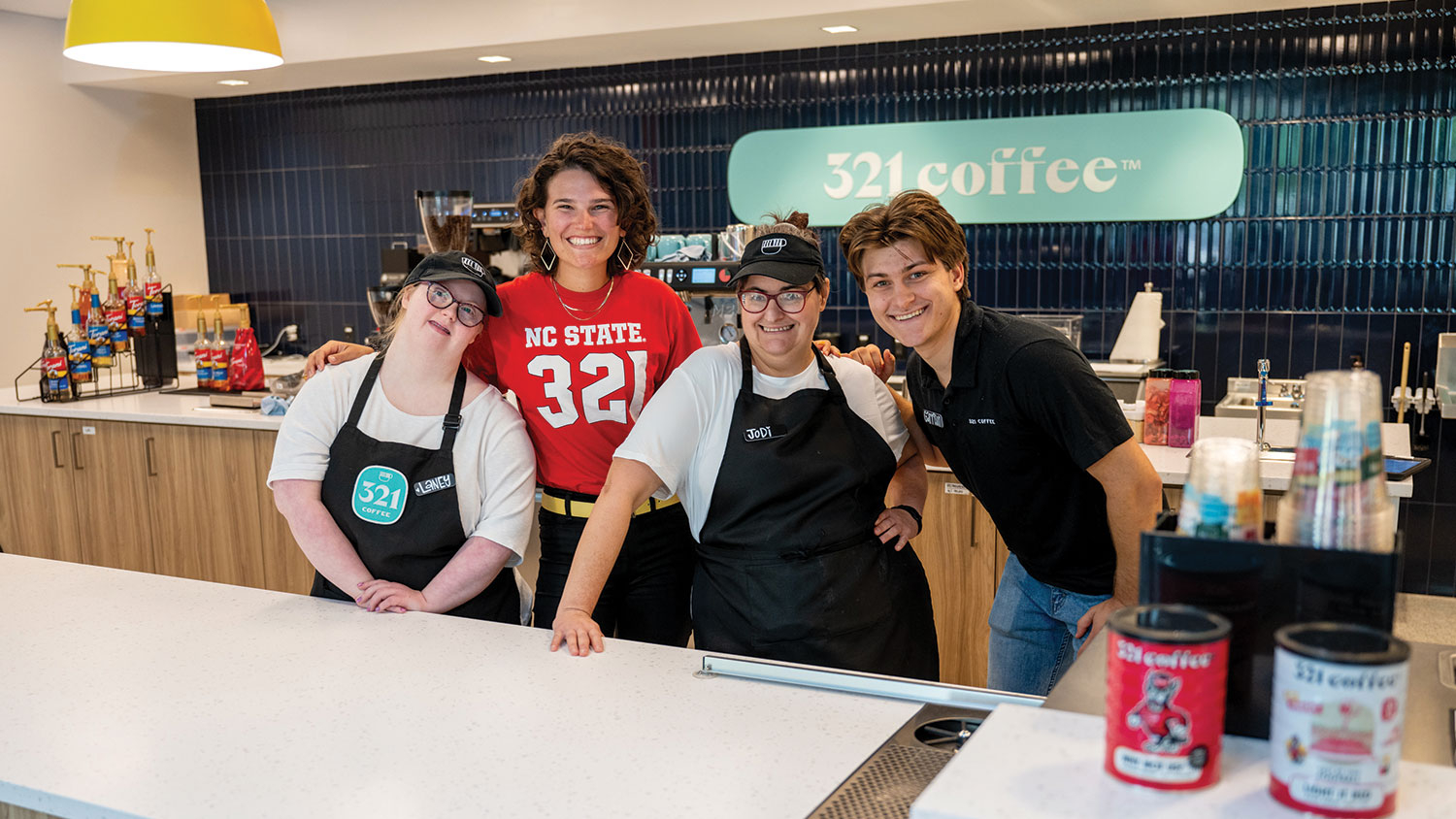Study shows global logistics is becoming more complex; nine key trends, strategies identified
Logistics complexity – in the form of fragmented channels, increased product variations, and consumer demand for customized solutions – has been increasing, according to a global study published recently by BVL International, a worldwide supply chain and logistics membership organization.
“Several trends identified in the study demonstrate that a number of major challenges lie ahead as the world becomes a more complex place in which to operate logistically,” said Dr. Robert Handfield, University Distinguished Professor of Supply Chain Management at the NC State University Poole College of Management.
Handfield led the study for BVL in collaboration with Professor Frank Straube and Dr. Andreas Wieland from the Technische Universität Berlin, and Professor Hans-Christian Pfohl from the Technische Universität Darmstadt. The study included more than 60 interviews with global supply chain executives and survey responses from 1,757 executives.
Handfield will discuss nine key trends from the study and related topics at BVL’s first North American chapter meeting to be held in Goldsboro, N.C., on August 12, 2013.
- Customer expectations. Rising customer expectations was ranked by survey respondents as the most important trend, and meeting customer requirements was ranked as the number one logistics objective by more than 20 percent of the respondents. In essence, the results indicate that logistics and supply chain management should primarily enable a company to satisfy its customers’ needs. However, as customers become ever more demanding and critical, traditional measures often fail when pursuing strategies to satisfy customers.
- Networked economy. In the past, companies typically considered themselves to be independent players in the market and, at best, managed interfaces to direct suppliers and customers. That is no longer enough in today’s networked economies. Companies are often forced to collaborate with partners both vertically and horizontally in their extended supply chain network, and these partners expect them to integrate their processes and systems. That requires network thinking rather than company thinking.
- Cost pressure. End customers continue to expect low costs. Although other requirements such as sustainability, social issues or risk-mitigation capabilities are increasingly discussed in the media, cost pressure seems to remain the ultimate criterion. The trend towards increased customer expectations has made it ever more difficult to reduce costs further. Logistics costs play an important role in reducing overall costs; their share of overall revenue is as low as 4 percent and 6 percent in the electronics and automotive industries, respectively. However, the survey shows that costs are on the rise, greater than 8 percent on average in manufacturing industries. A concerning result is that as many as 14 percent of the respondents cannot estimate their logistics costs.
- Globalization. As global footprints expand, logistics performance as measured by delivery reliability has deteriorated, due to increasing customer requirements, greater volatility, and problems with infrastructure. Two out of three respondents stated that their company’s logistics capability is negatively influenced by poor transportation infrastructure, which is a problem particularly in emerging markets. In sum, globalization clearly amplifies other trends and leads to an increase in complexity, particularly in regions of growth such as Russia, Eastern Europe, India, and Africa.
- Talent shortfalls. Across all regions and sectors, talent shortages in logistics are considered one of the most important challenges in the coming years. Shortages are seen at both the operational level as well as the planning and controlling function; about 70 percent of the respondents experience a shortage of skilled labor. In the United States and Europe, talent shortages are also a function of demographics. In emerging nations strong competition from other fields like finance, strategy and IT contributes to the talent shortage in logistics. The most important strategies to cope with this talent shortage are training and qualification programs and strategic cooperation with universities and research institutions
- Volatility. Market turbulence on the supply and demand side has increased over the past years. This was amplified by the economic and financial crisis, which demonstrated how fluctuations in one part of the world can build up to dramatic problems in other parts of the world. Survey participants said they believe volatility will continue to increase; more than 50 percent consider it to be a very important trend in five years.
- Sustainability pressure. This trend has emerged as a very serious topic. Already more than 55 percent of the respondents stated that green issues are part of their logistics strategy. Corporate social responsibility has also emerged as a highlight for debate. However, a great deal of uncertainty remains in the deployment of these strategies, especially relative to measurement systems, evaluation and setting goals and strategies for logistics sustainability.
- Increased risk and disruption. The majority of companies, irrespective of size, sector, country and position in the supply chain, consider the mitigation of internal and external risks essential. Strategies for managing risk around demand and planning are also considered important. Executives concur that strategic frameworks and tools are needed for engaging the entire network in the management of risk and disruptions. Solutions focused on improving transparency of tier two suppliers, inventory and demand impede mitigation and force companies into reactive strategies. Proactive strategies should include research and development, procurement, production and sales.
- New technology. The majority of companies are recognizing the growing need for investments in new technology, with about 60 percent of the respondents planning to invest in big data analysis tools within the next five years. These tools seek to develop capabilities around the comprehensive handling and intelligent connection of data to increase planning and control outcomes. This new wave of decentralized automated network technologies is in its infancy. Predictions from a trends study completed eight years ago concerning the use of these technologies have not yet materialized.
Key strategies that companies plan to adopt in the coming five years include end-to-end integration, technology investments, talent management, and global process standards. The study also identifies key steps that executives need to be thinking about in shaping their logistics strategies in the next five years, including focusing on talent management and creating partnerships to drive end to end integration.
This project was completed in April 2013, supported by international partners who collaborated on interviews and survey data collection.
Handfield will discuss an overview of the study’s findings and key steps for executives at the inaugural meeting of BVL’s first chapter in North America in Goldsboro, N.C. on August 12, 2013.
The event is being hosted by Volvo Group North America and is sponsored by APS Logistics, a leader in supply chain and logistics staffing. There is no cost to attend but a reservation is required. Reservations are being managed by Daniel Collins at APS Logistics. Contact Collins for details.
Additional information
- About this researcher: Rob Handfield
- About the Supply Chain Resource Cooperative
- About BVL


